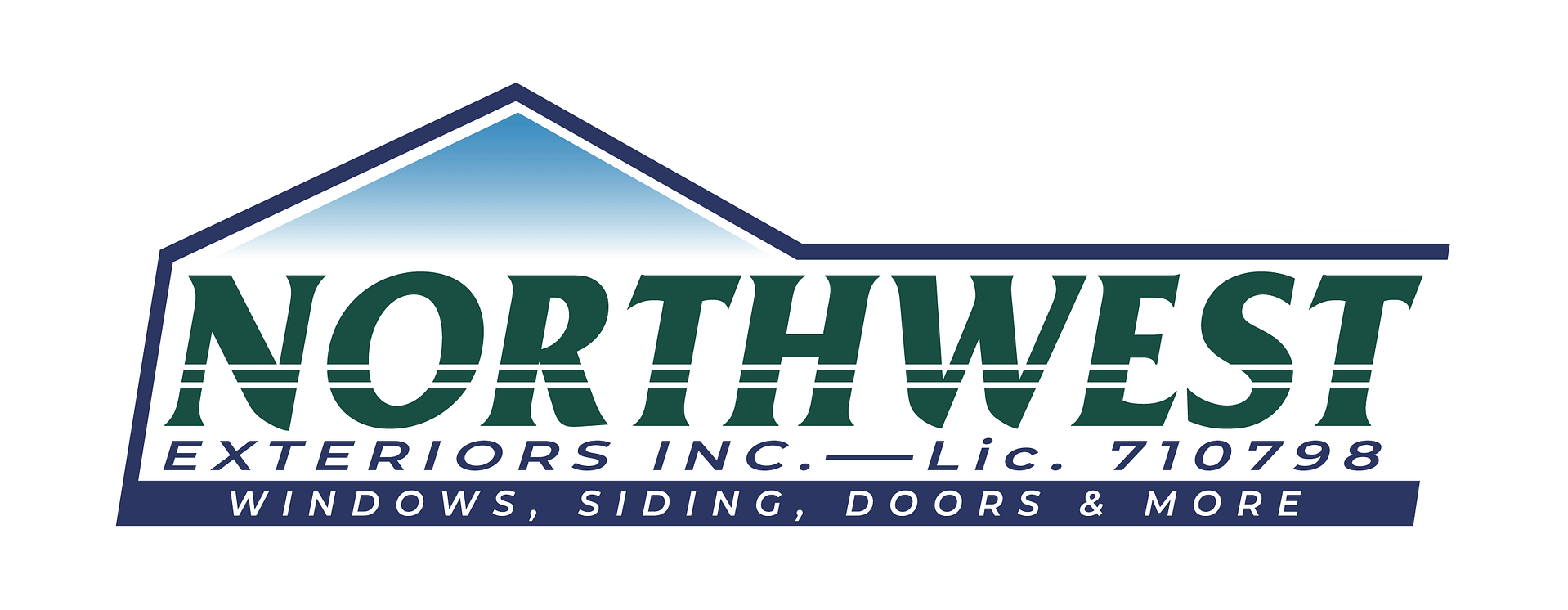
If you had to choose between aesthetics or performance for your new windows, which would you prefer? As curb appeal never fails to improve the market price of a home for some buyers, energy efficiency is the preference of others. What if you could have both? Depending on the materials you choose for your windows, you could enjoy the best of both worlds. Modern advancements in window materials make this dream a reality.
Selecting the right materials for energy-efficient windows can significantly impact your home’s comfort and energy bills. Did you know that windows can account for up to 30% of heating and cooling energy use? This article will discuss essential materials used in window manufacturing, evaluate their thermal performance, and compare maintenance requirements. By understanding these aspects, homeowners can make informed decisions that enhance energy efficiency, particularly for Sacramento replacement windows from trusted providers like Northwest Exteriors. This knowledge will help resolve common concerns about window quality and long-term savings in home improvement.
Understanding the Importance of Material Selection for Energy-Efficient Windows
Choosing the right materials for energy-efficient windows plays a critical role in enhancing a home’s performance. Materials such as those offered by window providers must withstand factors such as moisture and ultraviolet radiation for long-lasting durability and functionality. Without proper material selection, windows can suffer from corrosion, leading to costly repairs and Sacramento replacement windows.
Energy-efficient replacement windows, such as those offered by sacramento replacement windows, often utilize materials such as vinyl and fiberglass, which resist warping and provide superior insulation. Selecting windows with the Energy Star label guarantees that they meet strict energy efficiency guidelines. This not only contributes to lower energy bills but also helps in reducing carbon footprint.
Furthermore, high-quality materials help maintain a comfortable indoor environment by minimizing drafts and heat loss. When installing new windows, homeowners should consider how their chosen materials will perform over time, including their ability to resist moisture and other environmental stresses. Investing in optimal materials provides windows that remain effective and visually appealing for years to come.
Key Materials Used in Energy-Efficient Window Manufacturing
The selection of key materials in energy-efficient window manufacturing significantly impacts performance and customer satisfaction. Low-E coatings enhance glazing by reflecting sunlight and minimizing greenhouse gas emissions. Additionally, argon and krypton gas fills improve insulation. Various frame options, including vinyl, wood, and aluminum, offer unique benefits that contribute to durability and energy efficiency. Each of these elements plays a vital role in reducing energy costs and enhancing overall comfort.
Advantages of Low-E Coatings
Low-E coatings are an essential feature in energy-efficient windows as they significantly improve thermal performance. By reflecting radiant energy, these coatings help reduce heat transfer, minimizing energy costs associated with heating and cooling a home. Furthermore, Low-E windows can decrease noise pollution, providing a quieter indoor environment while preventing leakage of conditioned air, which boosts overall energy efficiency.
Role of Argon and Krypton Gas Fill
Argon and krypton gas fills play a vital role in enhancing the insulation properties of energy-efficient windows. These inert gases are used between glazing layers to minimize heat transfer, making them especially effective in extreme weather conditions. When combined with a durable polyvinyl chloride (PVC) frame and advanced coatings, they contribute to reduced energy costs while allowing ample daylight to illuminate the interior space without compromising comfort:
Benefits of Vinyl, Wood, and Aluminum Frames
Vinyl frames represent a strong choice for energy-efficient windows due to their excellent insulation properties and low maintenance requirements. This plastic material resists warping and moisture, helping homeowners qualify for potential tax credits associated with energy efficiency upgrades. Wood frames, while requiring more upkeep, offer a classic aesthetic appeal and provide natural insulation; often backed by robust warranties, they can be a great investment for those prioritizing sustainability. Aluminum frames, while less insulative, are highly durable and perfect for modern designs, making them suitable for various architectural styles. Each frame material presents distinct benefits, allowing homeowners to select the best option based on their specific needs and preferences.
Evaluating Thermal Performance of Window Materials
The type of material used in window construction greatly influences the R-value, which measures thermal resistance. Frame materials, such as aluminum, play a crucial role in energy loss through infiltration, thus affecting overall energy consumption. Understanding these factors enables homeowners to make informed choices that enhance window longevity and improve comfort.
How Material Type Affects R-Value
The type of material used in window construction directly influences the R-value, a key indicator of thermal resistance. For instance, vinyl and fiberglass frames provide superior insulation compared to aluminum options, which can lead to increased energy efficiency for homes with features like casement windows. Homeowners can refer to the National Fenestration Rating Council to find R-value ratings that help quantify the impact on energy consumption, ultimately contributing to a reduced carbon footprint and enhanced comfort in spaces such as bathrooms.
Impact of Frame Materials on Energy Loss
The choice of frame materials significantly influences energy loss through mechanisms like condensation and solar gain. For example, fiberglass frames offer superior insulation, reducing the likelihood of condensation, which can lead to mold and damage. In contrast, frames made from less insulative materials may allow more heat transfer, increasing the demand for air conditioning and resulting in higher energy costs over time.
Comparing Material Lifespan and Maintenance Requirements
Assessing the long-term performance of various frame materials is essential for homeowners looking to invest in energy-efficient windows. This section will discuss how different materials hold up over time, along with necessary maintenance considerations. Factors like exposure to climate conditions and the effectiveness of weatherstripping will be covered, providing practical insights into optimizing lifespan while reducing carbon footprints.
Long-Term Performance of Different Frame Materials
When evaluating the long-term performance of different frame materials for energy-efficient windows, homeowners should consider factors such as durability and maintenance requirements. Vinyl frames offer outstanding efficiency and require minimal upkeep, making them a preferred choice for those concerned with environmental protection. In contrast, wood frames, while providing natural insulation and aesthetic appeal, demand more frequent maintenance to preserve their longevity, especially in areas with extreme weather conditions.
Maintenance Considerations for Energy-Efficient Windows
Homeowners selecting energy-efficient windows should consider maintenance requirements tied to material choice. Frames made from vinyl or fiberglass typically offer high durability with minimal upkeep, further enhancing their appeal. In contrast, wood frames, while providing beauty and natural insulation, require more attention to prevent issues such as insect damage and moisture degradation, which can lead to increased expense over time:
Cost Analysis of Energy-Efficient Window Materials
Evaluating the cost of energy-efficient windows involves understanding the balance between initial investment and long-term savings. Options like argon-filled insulated glazing can enhance utility savings while considering budget-friendly alternatives such as vinyl siding. This section explores how these choices impact overall expenses and ventilation efficiency, providing homeowners with valuable insights into making informed decisions.
Initial Investment Versus Long-Term Savings
When homeowners undertake a renovation project that includes installing energy-efficient windows, understanding the initial investment compared to long-term savings is essential. Though materials like metal frames may have a higher upfront cost, their effectiveness in reducing heat transfer and providing noise reduction can lead to significant savings on energy bills over time. Moreover, investing in soundproofing options enhances indoor comfort, making the overall expenditure worthwhile for those seeking a more efficient and quiet living environment:
Budget-Friendly Options for Energy-Efficient Windows
Homeowners looking for budget-friendly options for energy-efficient windows should consider vinyl frames. Vinyl offers excellent insulation at a lower price point compared to wood or fiberglass, making it a practical choice for window replacement. Additionally, opting for windows that utilize recycled materials supports environmentally conscious recycling efforts, adding value to both the installation process and overall home efficiency. By selecting vinyl windows, homeowners can enhance their property’s aesthetics while maintaining a focus on cost savings and energy performance.
Sustainable Practices in Energy-Efficient Window Production
Sourcing recycled materials plays a critical role in the production of energy-efficient windows, promoting sustainability and environmental responsibility. Eco-friendly manufacturing processes further enhance this approach, reducing waste and energy consumption. These practices not only lower the environmental impact but also contribute to the overall effectiveness of the windows, offering homeowners both quality and ecological benefits.
Sourcing Recycled Materials
Sourcing recycled materials is an essential component in the production of energy-efficient windows, as it promotes environmental sustainability and reduces resource consumption. Manufacturers often utilize post-consumer and post-industrial plastics to create high-quality vinyl frames, which help lower the overall carbon footprint of window installations. By investing in windows made from recycled materials, homeowners can contribute to a more sustainable future while enjoying the benefits of improved energy efficiency and durability.
Eco-Friendly Manufacturing Processes
Eco-friendly manufacturing processes are essential for creating energy-efficient windows while minimizing environmental impact. For instance, utilizing advanced technologies that reduce energy consumption during production contributes to sustainability. Additionally, employing materials sourced from recycled content not only promotes responsible resource use but also enhances the overall efficiency and durability of the windows, making them a practical choice for environmentally-conscious homeowners.
Future Trends in Energy-Efficient Window Materials
Innovations in window technology are at the forefront of advancing energy efficiency, focusing on both performance and sustainability. Smart materials are being integrated into window designs to enhance insulation and temperature regulation. These developments will be explored further, highlighting their significant contributions to creating energy-efficient windows that meet the evolving needs of homeowners.
Innovations in Window Technology
Recent advancements in window technology focus on integrating smart materials that enhance energy efficiency. For example, dynamic glazing options allow windows to adjust their tint based on sunlight exposure, thereby optimizing heat gain and improving indoor comfort. These innovations not only promote better energy management but also contribute to aesthetically pleasing designs, fulfilling the dual needs of sustainability and visual appeal for homeowners looking to select optimal materials for energy-efficient windows:
The Role of Smart Materials in Energy Efficiency
Smart materials are increasingly vital in the development of energy-efficient windows. These innovative materials can adapt to environmental conditions, such as adjusting tint based on sunlight to optimize heat gain while maintaining indoor comfort. Incorporating smart materials enhances energy efficiency, allowing homeowners to enjoy reduced energy costs and improved comfort, while emphasizing sustainable practices in window design.





